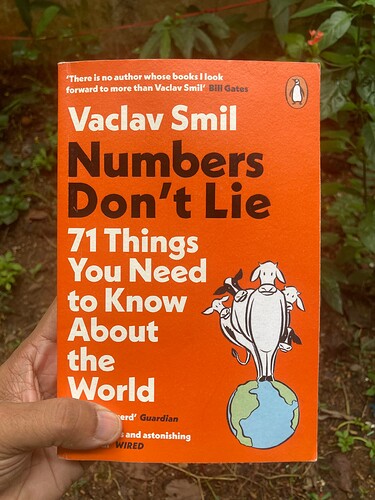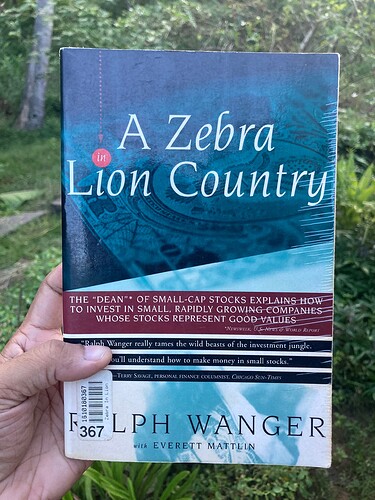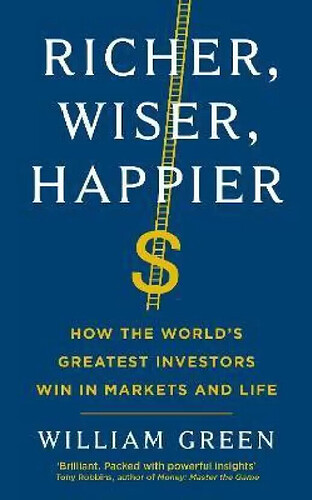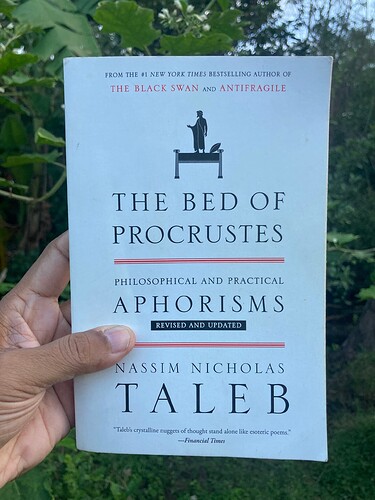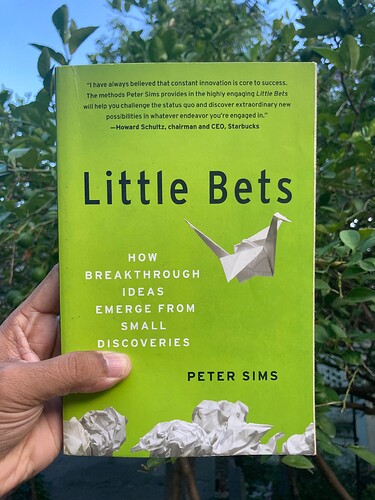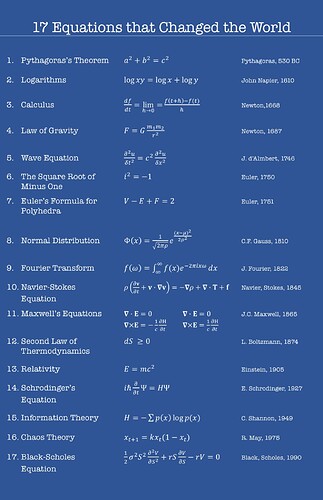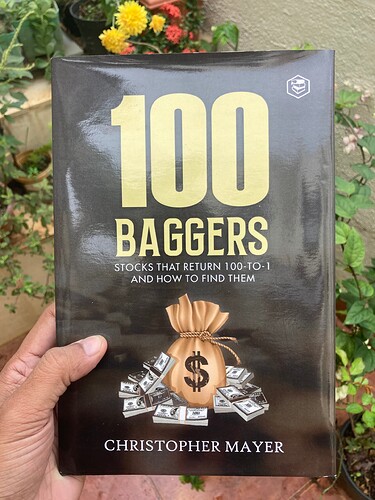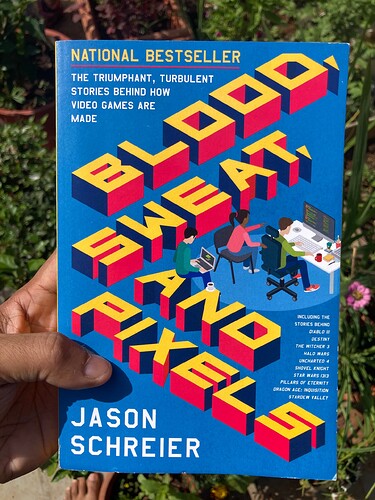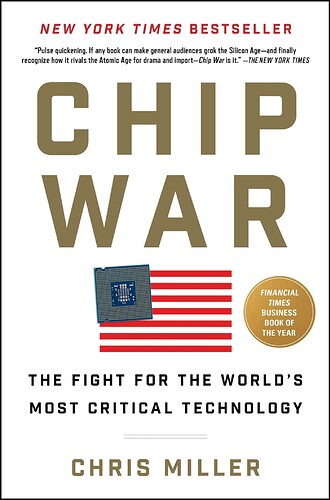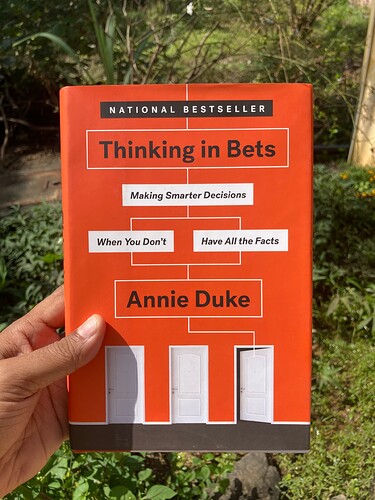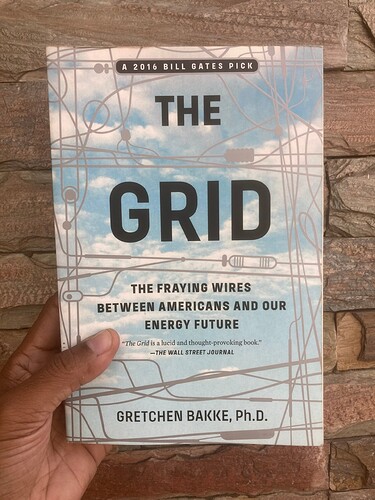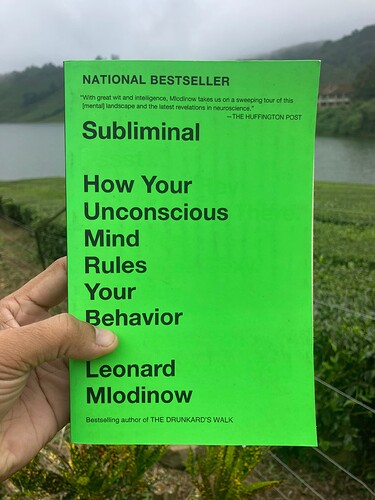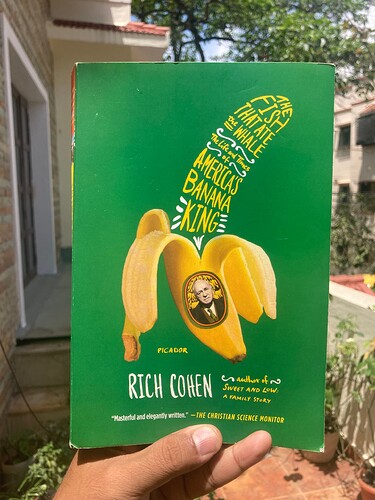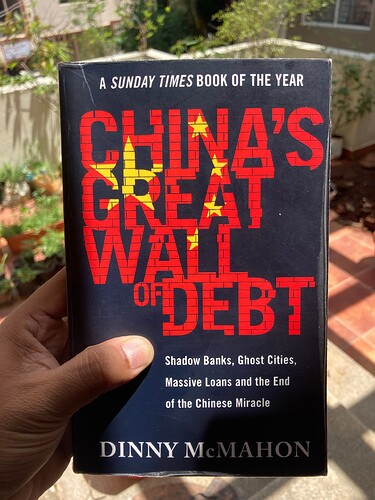Numbers Don’t Lie, Vaclav Smil, 2020 - I relate so much Vaclav Smil being a numbers nut myself. You can understand history qualitatively in stories and you can understand them in numbers by looking at long-term trends of things and also guess what’s to come by applying some mental models. This is our civilisation, more in numbers and less in narratives
My notes -
-
Energy consumption per capita is 150 GJ in developed countries vs 35 GJ in Nigeria (Barrel of Crude has 42 GJ)
-
World population is ~8 billion and it produces $90 trillion economic output, consuming a 500 billion GJ of energy
-
TFR - Total Fertility Rate - Number of children born to a woman during her lifetime. TFR has been falling world-wide - (quality over quantity). TFR of 2.1 is replacement level - population remains stable (little over 2 to make up for two parents and girls that don’t survive till fertility)
-
South Korea TFR dropped from 6 to under 2 in 30 yrs (’60s - ‘90s). (Its currently at 0.92!)
-
‘50 - 40% lived in countries with TFR > 6. ‘00 - just 5% in countries with TFR > 5 and mean was 2.6 (closer to replacement level of 2.1). By 2050 - 75% will be in countries below replacement
-
In 1900 Europe had 18% of world population. In ‘20 its 9.5%. Asia is now 60% of world pop and is ascending. Between ‘20 and ‘70, Africa will have 75% of all births (wow)
-
If TFR is below replacement rate of 2.1 but above 1.7, there’s a possibility of future rebound (France and Sweden are at 1.8). TFR < 1.5 makes rebounds very unlikely (1.3 in Spain, Italy and Romania. 1.4 in Japan, Ukraine, Greece and Croatia)
-
Best indicator for quality of life is infant mortality rate. Low rates can only be achieved by a combination of several factors - good healthcare, prenatal, postnatal and neonatal care, good nutrition, good sanitation and access to social support, govt. investment in infra etc.
-
Infant mortality rate was 200-300 (out of 1000 births) in the 1850s - reduced to 35-65 in 1950s. In affluent countries with homogenous population (low migration) this is now < 5 (Japan, South Korea, Iceland, Finland, Norway). Its relatively higher in Canada (5) and US (6) due to heterogenous migrant population and income inequality
-
Vaccination has the highest cost-benefit. Pentavalent vaccine costs $1 and prevents diphtheria, tetanus, pertrussis, polio, meningitis, otisis and pneumonia. Returns in terms of illness costs and economic benefits add up to 44x return on investment (Gates foundation research)
-
Vaccination coverage is now 96% in high income countries and 80% in low-income nations (up from 50% in ‘00)
-
Average heights been increasing over the last century. In Japan, it was 160 cm in 1900 and is 172.6 cm in 2020. High animal protein (milk, dairy products, meat and eggs) has led this shift
-
Being tall is associated with a lot of benefits from higher life expectancy, lower risk of cardiovascular diseases and also higher earnings (Correlation first documented in 1915). CEOs were taller in firms with large assets!
-
Netherlands has tall citizens (182.7 cms) - mostly from the last quarter of 20th century - Dutch milk production and milk consumption rose through the 60s. Easiest way to improve a child’s chances of growing taller is to give them more milk
-
Life expectancy has been going up around the world since 1850 when it was 40 in the US. Japan currently has the highest at 87 - About 20 years for 50 years gain, but this gain might be tapering out and we need fundamental advances in science to continue at that rate.
-
Our ability to sweat lets us run longer - we can remove heat from the body through sweat and continue burning energy at high rates (Amateur marathoners may use 700 watts vs experienced ones at 1300 W in 2.5 hrs for 32.2 kms)
-
The great pyramid of Giza was probably constructed by a maximum of 7000 workers going by back of the envelope calculation of potential energy and calorie conversion of food and other supporting evidence at the site
-
GDP as a measure doesn’t measure air and water quality, soil erosion, biodiversity loss and the effects of climate change
-
Unemployment measures vary wildly from 1.2% to 6.7% in the US depending on ways of measuring - a 5x difference based on the methodology
-
Nordic countries are the happiest as per world happiness report - it measures based on GDP per capita, social support, life expectancy, freedom of choice, generosity and perceptions of corruption. (Some of the happiest countries have the highest suicide rates)
-
In 1800 < 2% of world population lived in cities. By 1900 ~5%. 1950 it reached 30% and by 2007, ~50%. There are 512 cities with a population of > 1 million, 45 of them > 5 million and 31 above 31 million.
-
WW-I led to several advances - diesel powered submarines, tanks, bombing raids, aircraft carriers, portable transmitters etc.
-
In 1909 Fritz Haber had figured out a way to manufacture Ammonia (NH3) from Nitrogen and Hydrogen under high pressure. In BASF, Carl Bosch in 1914 commercialised this to create the world’s first Ammonia plant. (Haber-Bosch process). This was to be used to produce Sodium or Ammonium Nitrate fertilisers. When Germany was blockaded in WW-1, they used Ammonia to create Nitric Acid and TAN to synthesise explosives instead of fertilizers (Deepak Fertilizers does exactly this)
-
Iron Curtain - Ran from Baltic to the Black Sea with Moscow controlling nations to the east of it. Post Soviet fall, the Maastricht treaty of 1993 helped form the European Union. A common currency in Euro came about in ‘99. With 450 million population (<6% of world), it produces 20% of world’s economic output (US is 25%) and 15% of global exports.
-
Adoption of common currency without common fiscal responsibility, excessive bureaucratic control from Brussels, reassertion of sovereignty threaten the EU
-
UK is now an aging has-been (32% old-age dependency ratio), de-industrialised country with a per-capita income that’s just over half of the Irish mean
-
In the long-run, the fortunes of nations are determined by population trends
-
Japan has 25% population above 65. Population is shrinking as well with the 127 million today expected to reduce to 97 million by 2050 when people above 80 will outnumber the children!
-
China population is aging rather rapidly due to the one-child policy (abandoned only in 2015). Ratio of economically active to dependent people peaked in 2010. China of today might be the Japan of the ‘90s when Japan was a threat to the West in terms of growth only to stagnate for the next 30 years
-
China’s nominal GDP is 5x India’s as per IMF’s 2019 estimates. $14.1 trillion vs $2.9 trillion. Adjusted for PPP, China’s per capita is $20980 vs India’s $9030
-
Between 2000 and 2017, manufactured products output rose from $6.1t to $13.2t but its importance is dropping fast, just as agri has retreated to just 4% of economic output today. Manufactured products was 25% of world output in 1970 but was only 16% in 2017
-
China (30%), US (17%), Germany and Japan make up 60% of manufactured products output - but manufacturing was only 21% of Japan and Germany’s output and only 12% of US output. Services and Tech output is far higher now in US and consequently, manufacturing trade surplus of US until 1982 and China’s chronic deficits until 1989 have reversed (This is Putin’s current bone of contention if you listen to his speeches)
-
Keeping large empires for extended periods of time has become a challenge of late
-
1880s is probably the most inventive period in human history - Electricity, ICE engines, Electromagnetic waves (and consequent applications of X-rays, infrared, cosmic rays, radio waves etc.), commercial coffee, pancakes, oats antiperspirant, kraft paper, light-rail system, bicycles, revolving doors, skyscrapers, WSJ, cash register, elevator, vending machine, Coca-cola and ballpoint pen
-
Transformers are a critical invention that allows us to step-up and step-down current allowing us to deliver it across great distances and also to charge devices like phones (all chargers have a transformer)
-
Diesel is 12% more energy-dense and diesel engines are 15-20% more efficient than petrol, allowing diesel vehicles to go further on same tank of fuel. 40% of European cars are diesel while only 3% of US cars are. Diesel will continue to dominate petrol for heavy road transport, shipping, off-roading etc
-
Edison held 1100 patents in the US and more than 2300 worldwide
-
Inventions improve efficiency but over long-periods, the annual rate is still low - crop yields have risen 2% since 1950. Steam generators converting thermal power to electricity at 1.5%. Lighting (lumens per watt) has improved the most at 2.6% from 1881 to 2014 (LED bulbs). Yet, our progress in computing power following Moore’s law has doubled the power every 2 years from 1970!
-
Information would be carried forward only in human brains as bards told and re-told stories. Then clay cylinders, tablets took over, and later scrolls and Gutenberg’s movable type. Today, all of Shakespeare’s plays can be held digitally in less than 5 MB
-
World’s first gas turbine began to generate electricity in 1939 (ABB) with efficiency of 17%. The gases from the turbine were still hot enough (600 deg C) and steam turbine attached to gas turbine could improve efficiency and so CCGT was born (combined cycle gas turbine) - today CCGT’s deliver 60% efficiency. Siemens has a CCGT rated at 593 MW.
-
Levelised cost of electricity for coal-fired steam generators is $60/MWh. $48/MWh for solar photovoltaics, $40/MWh for onshore wind. $30/MWh for conventional gas turbines and < $10/MWh for CCGTs (Caveat: Book came in 2020)
-
Nuclear reactor construction was slow to start but picked up in ‘60s and by ‘77 accounted for 10% of US energy and 20% by 1991. Nuclear share of electricity today - 72% in France, 50% in Hungary, 38% Switzerland, 24% in South Korea and 20% in US
-
Three nuclear failures so far - Three Mile Island in ‘79, Chernobyl in ‘86 and Fukushima in ‘11. There are currently 449 operating reactors in the world as of ‘19 with 53 under construction (Failure rate is perhaps too high given the number of reactors for a 60 yr period)
-
Wind energy requires a lot of fossil fuels - For a 5MW turbine, it takes 150 tons of steel for foundations, 250 tons for rotor hubs and nacelles, 500 tons for the towers. Cranes and earth moving equipment, as well as vehicles that transport parts use diesel. We will need 450 million tonnes of Steel, 90 million tons of crude and 600 million tons of coal by 2030 if Wind is to form 25% of global power demand
-
A well-sited and well-build wind turbine can generate as much energy as it took to build it in a year
-
So far we have reached 14 MW wind turbines (GE). Larger capacities will need larger blades (energy increases with square of radius swept by blades) and so larger towers to house them in. Blade mass increases as a cube of blade length, so larger designs are extraordinarily heavy
-
PV cells were $300/W in 1950s, $80/W in ‘70s, $1/W in 2011 and 8-12 cents/W in 2019. More drops in price may come but cost of installation is substantially higher. Efficiency is at 10 W/Sq.m in sunny places
-
In 2000 global PV generation was < 0.01%, a decade later 0.16%, and by ‘18 about 2.2% (Hydro is 16%). PV cells may do 10% by 2030. Energy transitions on a global scale, take a long time (Be wary of quick shift to renewable claims)
-
Largest Li-ion battery storage system (with 18k cells) can store 400 MWh. To be completely on renewables , we need to store energy and central Li-ion systems may not be able to serve megacities. Pumping water and using turbines or decomposing water with cheap solar and storing Hydrogen may also hold promise
-
Electric cars are about 40% battery weight. For large container ships to be viable through electric power, energy density has to be 10x higher than what’s possible today (these will continue to run on diesel)
-
Electricity is now 38x cheaper than in 1902. Considering wages have gone up, it is now 200x more affordable. Along with lumens/W efficiency of modern bulbs, light is now 2500x more affordable!
-
Though PV cells prices are falling and wind turbines prices as well, electricity prices have gone up overall (Renewables are overall expensive)
-
In 1800, few places around the world burned coal - 98% was biomass or “new” carbon (wood and charcoal). By 1900, biomass was still 50% and by 2000 12% (sub-Saharan Africa > 80%)
-
First climate change convention was held in 1992 - 86.6% fossil fuels then. In 2017, fossil fuels supplied 85.1% energy needs - A mere 1.5% reduction in 25 years (again, not easy to replace fossil fuels)
-
In ‘92 renewable sources provided 0.5% of electricity and in 2017 4.1% - this may look like a win for wind and solar but most gains have come from hydro
-
Only 27% of total final energy consumption is electricity (Very, very important metric - a lot of energy consumption in shipping, logistics, industrial, home heating isn’t electricity - they are diesel, aviation kerosene, gas and coal and won’t go away anytime soon. Neither can use of plastics die anytime soon)
-
We crossed the Atlantic in sailing boats that took 4 weeks eastward and 6 weeks westward (Against the wind). Steamships did it in ~16 days in 1838, down to 9 days in 1848, ~5 days in 1907 and 3.5 days in 1952. Boeing 787 today does it in 7.5 hrs (Concorde could do it in 3.5 hrs)
-
First bicycle design came about in 1817, was made of wood and was powered without pedals by feet pushing against ground. Only when cheaper steel came about, along with pneumatic tires and paved roads that it took off around 1885! Still the Rover bicycle design stayed almost unchanged for 100 years until alloy frames, mountain bikes and upturned steering and thin tyres came about around 1980
-
Charles Goodyear’s vulcanisation process led to solid rubber tyres in 1844. Dunlop invented the inflatable tyre around 1880s. Around 1890s Michelin brothers came up with detachable tyres for bicycles. Dunlop brand is today owned by Goodyear tire company. Michelin is still a market leader behind Japan’s Bridgestone - rare case of business surviving and staying near top
-
Ford Model T Runabout in 1909 costed $825. Assembly line embracement and innovations reduced this cost to $260 in 1925 (just 2.5 months of avg wage that time). Ford market share was 15% in 1908, 48% in 1914 and 57% by 1923. By 1927 Ford had sold 15 million model Ts!
-
Best selling car of all-time though isn’t the Ford Model T but the Volkswagen commissioned by hitler with design by Ferdinand Porsche (and hence the Porsche 911 line still pays tribute that that design).
-
Watt/gm of car engines have gone up from 1 watt/12gm 100 yrs back to 1 watt/gm today in modern cars. However, avg car weights have gone up tremendously as well (~3x reaching 1.8 tons)
-
Vehicle-to-passenger ratio is another key indicator of efficiency and choices we make. A small Citroen has a ratio of 7.3 vs a Boeing 787’s 5.3 (0.1 for a bicycle and 1.6 for a Vespa. 28 for a BMW 740i and 32 for Ford F-150). Nearly three quarters of commuters drive alone to work making this worse
-
3/5th of EV electricity comes from fossil fuels (global mean) - some places this power comes from hydro (99% in Quebec), some places from nuclear fission (75% in France) while most EVs in China are driven by fossil fuels
-
Jet Fuel or Jet A-1 has 42.8 MJ/kg - a bit more energy dense than gasoline but can stay liquid at -47 deg C
-
Nitrogen is the most important macronutrient in crops, alongside phosphorous and potassium. Nitrogen is mostly “fixed” from its inert state in air by bacteria attached to plants’ roots. With growing demand crop rotation wasn’t an option and so synthetic fixing was a necessity - facilitated by Haber-Bosch process ammonia (urea) which provides half of all nitrogen required by crops (Nitrogen from air and Hydrogen from methane in natural gas (CH4) which also provides the energy required
-
Nitrogen utilization efficiency via Urea has reduced since the 60s and excess nitrogen applied also acidifies ecosystems and nitrates also contaminate fresh water sources (N20 is also a greenhouse gas)
-
Wheat yields in early medieval periods was 0.5 ton/hectare. 1 ton in 16th century. 1950 it rose up to 2 ton with crop rotation and urea. Borlaug’s dwarf variety improved yields producing as much wheat as straw which tripled yields since to about 3.2 t/ha (though population doubled 2-3 fold, this helped us keep up with the mouths to feed)
-
Food waste - 40-50% of root crops & fruits, 35% fish, 30% cereals and 20% oilseeds, meat and dairy are wasted. In poor countries, wastage is in the supply chain and in rich, post reaching the Customer (largely sedentary aging populations)
-
US supply of nutrition per capita was 2100 cal in 1970s to 3600 kcal today. Actual avg. daily intake is 2100 kcal, so 1500 kcal is wasted - all the inc. in supply in last 50 yrs is wasted! Obesity (bmi > 30) has more than doubled from 13.4% to 35.7% between 1962 and 2010. 74% males and 64% females have excessively high weight (bmi > 25)
-
Classic Mediterranean diets have low incidence of heart disease - low on sugar and meat, high intake of carbs in bread, pasta, rice complemented by pulses and nuts, dairy, fruits, veg and seafood, consumed lightly processed with olive oil. Italian diet is now less Mediterranean with increased meat and animal fats (3x), less than 50% dietary fats from olive oil and beer substituted for wine
-
1976 US beef consumption was 40% and chicken 20%. In 2010 its 16% beef and 40% chicken. Nothing converts feed efficiently into animal protein as broilers and so chicken is cheap. Avg weight of broiler chicken was 1.1 kg in 1925 and is now 2.7kg in 2018!
-
French per capita wine consumption was 121 L in 1850 and 124 in 1950 (barely changed). However, it dropped to 95 L in 1980, 71 L in 1990, 58L in 2000 and 40 L in 2020 (substituted by mineral water, fruit juices and carbonated soft drinks)
-
Agriculture today is not to grow crops for people but to grow feed for animals
-
High Japanese life expectancy can be attributed to moderate overall food consumption (belly 8 parts in 10 full). Japanese also waste food less vs west (avg availability of 2700 kcal and consumption of 1900 kcal - wastage of 800 kcal vs 1500 kcal of US)
-
Modern cement began its life in 1824. The 20th century was the era of reinforced concrete. Between 1900 and 1928, US consumption rose 10x. China produces 60% of global total. In last 2 yrs, China has used more cement than the US did in the entire 20th century!
-
About 1.2 billion people need to heat their houses - 400 million in EU, Ukraine & Russia. 400 million in northern US and 400 million in China
-
Between 1800-2000, transfer of carbon from fossil fuels to atmosphere increased 450x while population went up just 6x. 2000-2017 though emissions have declines by about 15% in US and EU while it has gone up 3x in China (probably mere displacement of production)
-
Four pillars of modern civilisation - ammonia, steel, cement and plastics (none have affordable non-carbon alternatives)
These are bite-sized chapters covering a wide-range of (related) topics from demographics, energy, inventions, mobility, renewables, climate change, agriculture, etc. If you love making sense of the world we live in, you are bound to enjoy this. 9/10

